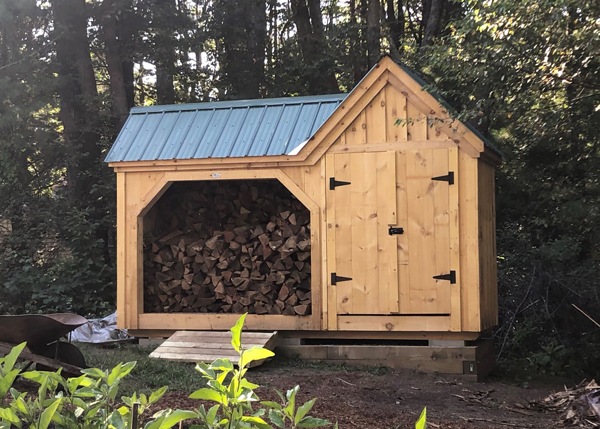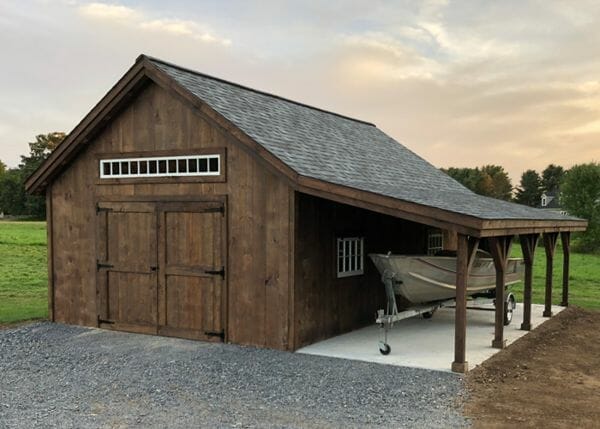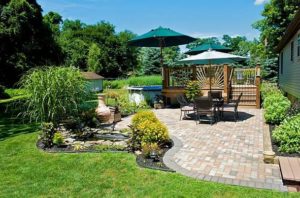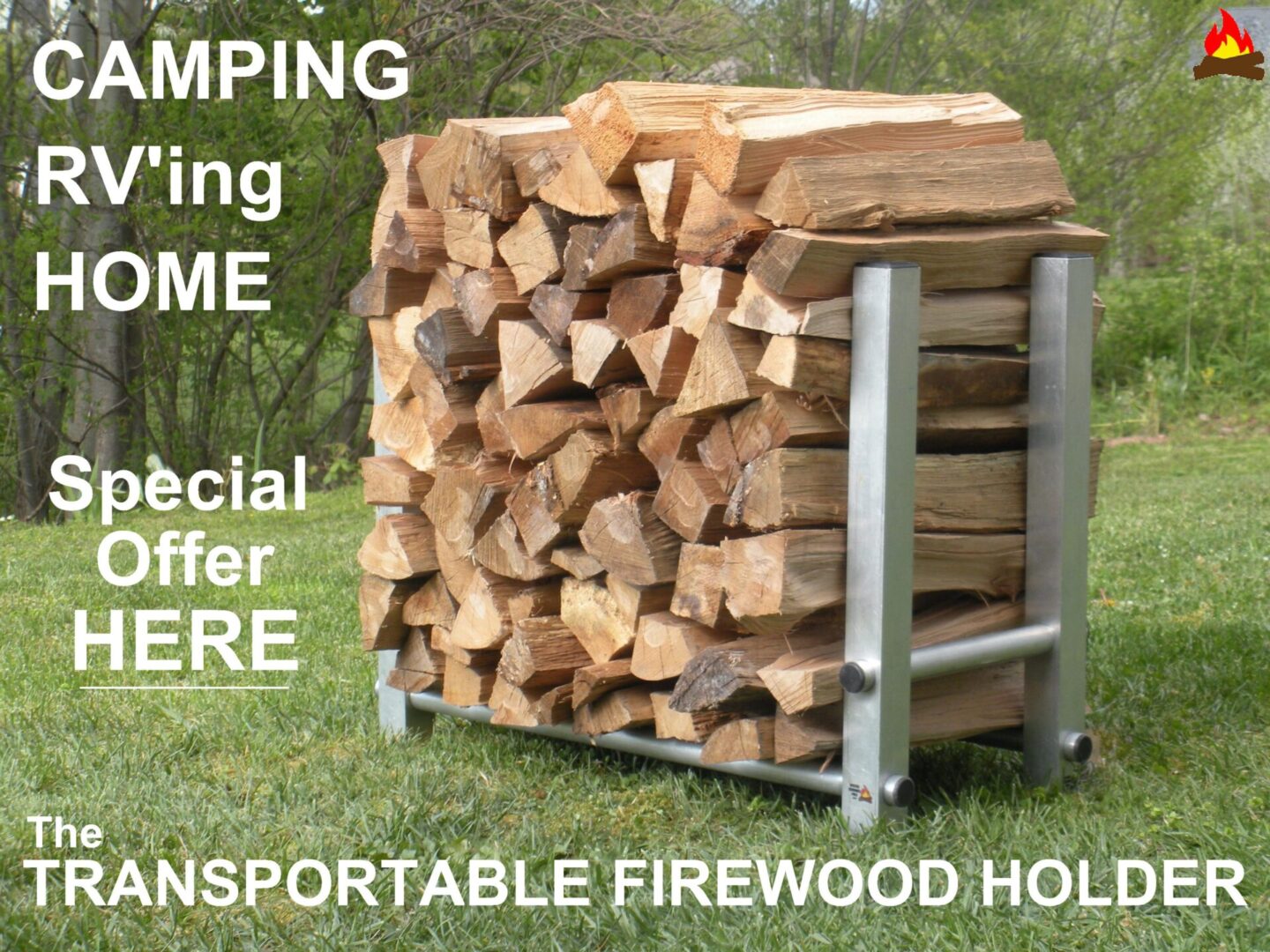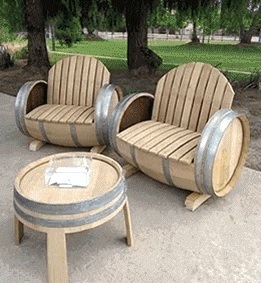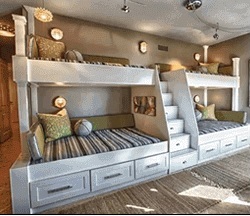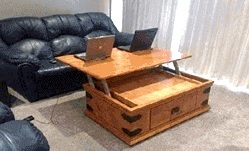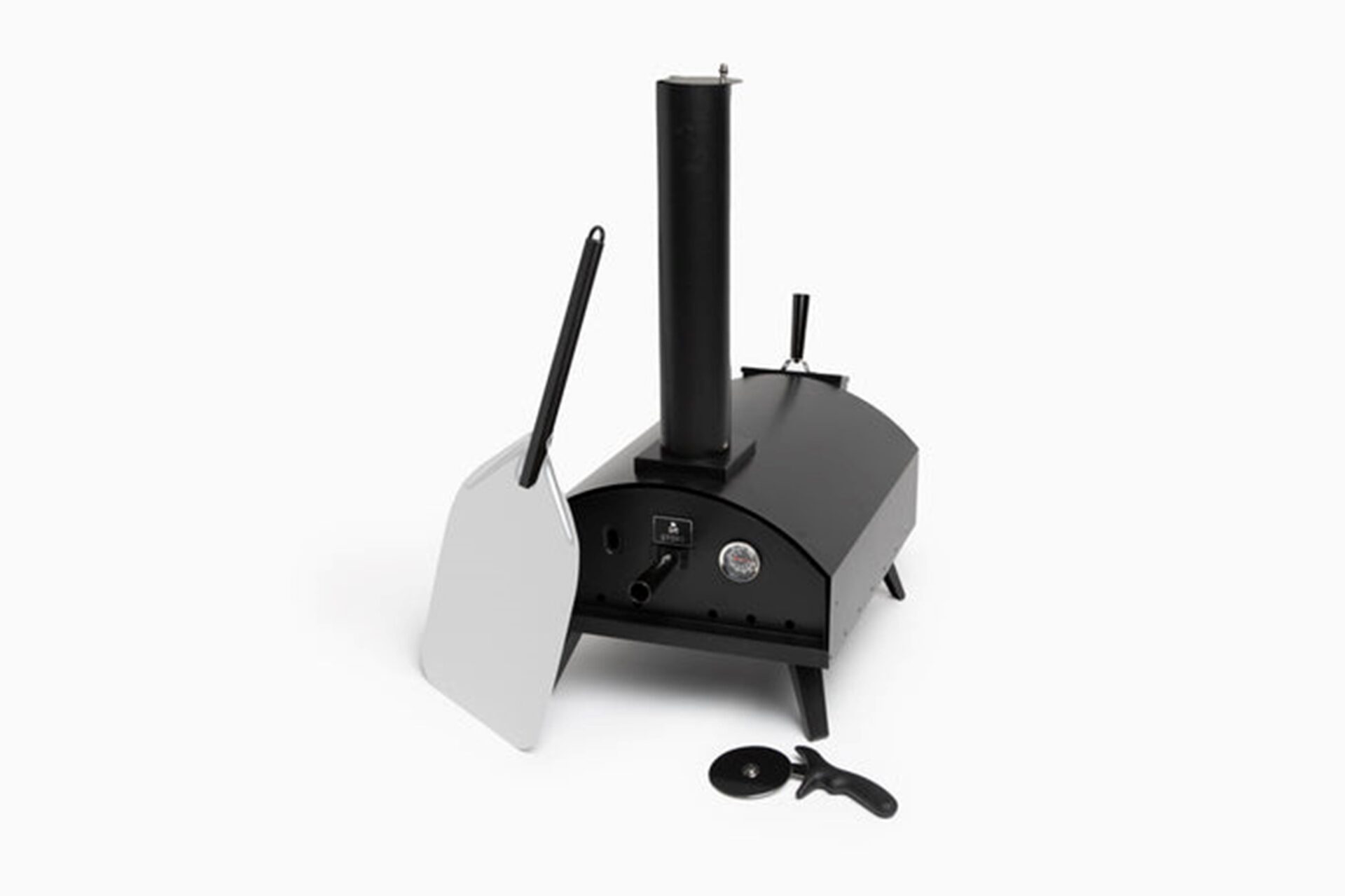GET THE MOST FROM YOUR FIREWOOD SUPPLY. Choosing to add specific wood types at various stages of a fire can make a world of difference, improving the efficiency of every burn. Quicker startups with less smoke – hot embers for consistent open fire cooking – and fires that burn longer with less maintenance. These are just a few benefits received when mixing two of the most basic types of wood…HARDWOODS and SOFTWOODS.
Before I reveal my ‘go to’ method for better fires, I’ve included some valuable information. It’s ‘good-stuff-to-know’ for all of you who burn wood for HEAT, FOOD and FUN.
HARDWOODS– the pros and cons
Nearly all hardwood trees are referred to as ‘deciduous’, meaning they lose their leaves in Autumn. The leaves are mostly broad in size and the trees produce flowers at some time during the year. Most of these trees have wood that weighs over 25 lbs. per cubic foot when air dry, thus the term ‘hardwood’.
PROS: The best for wood fuel energy, especially for home heating. This wood produces reliable, consistent heat with sustained burns. It’s good for open-fire cooking too, as it burns down to coals which stay hot longer and produce consistent heat. If seasoned properly, this wood can be stored for years with no worries of rot or losing its value.
CONS: If you purchase from a firewood dealer, this wood is more expensive than softwoods. While it is generally preferred over softwood, it is heavier to handle, and it wears harder on the tools needed to sawcut and split. It needs kindling or other fire starters to become hot enough to burn on its own. Hardwoods also take longer to ‘season’ (dry) before burning, and may not be readily available in your geographical location.
SOFTWOODS– the pros and cons
Softwoods are trees that most people associate with the evergreen cone-bearing trees, the ones with leaves that are needlelike. They are referred to as Conifers. The wood from these trees weighs less than 25 lbs. per cubic foot when air dry. This lighter wood tends to be softer, thus the term ‘softwood’.
PROS: Burns hot and fast. Great for starting and rekindling fires. Catches fire quickly and more easily than hardwoods. Softwood is less expensive if purchasing, and lighter in weight. Most softwood is easy to cut and split too, which puts less strain on power tools such as chainsaws and log splitters. This wood type ‘seasons’ (dries) quicker than hardwoods, allowing for effortless burning not long after splitting.
CONS: Heat value is low. While it produces an intense burst of heat on startup, it doesn’t burn as long as hardwoods. If using for home heating, logs will need to be loaded more often, requiring more handling in the process. Becomes even softer and often rots much quicker than hardwoods. Certain types of soft woods, especially in the pine family of trees, cause creosote when burned. This tar-like deposit builds up and attaches to the inside of chimneys, risking dangerous home fires.
HOW (and why) I GET BETTER FIRES when MIXING HARD & SOFT WOODS
Let me begin by explaining what I mean by ‘better fires’: I’m talking about fires that after the initial spark, they startup quick, turn to flames with little smoke, and easily catch fire without struggle – fires that burn hot and freely, indoors and out, without having to constantly poke the logs to create flames – fires that cook food with a controlled and steady heat…no half-burned logs with polluting clouds of smoke – fires that need little maintenance to burn on their own. And last but certainly not the least…the fires that provide magnificent flames and comfortable warmth for my friends and family to gather round for relaxing, and the best of times.
Ok, now that you get the idea…
HERE’S HOW I DO IT
I intentionally add softwoods at specific stages of all my fires.
As I explained earlier, this allows the fire to grow naturally, progressively burning hotter, and almost instantly transforming to flames with minimal attention.
- When I initially build a fire, I use kindling of course. But I also stack the pile with a few sticks of softwood too, with only one, maybe two pieces of hardwood. The softwood ignites fast, hot, and in turn provides enough heat to ignite all the wood easily with no fuss.
- Often times a fire will slow down (mostly from neglect) losing its energy. And when the heat diminishes, the flames go with it and the smoke takes over. Once again it’s softwood to the rescue! Instead of feeding the fire with hardwoods (which will smoke until they get hot enough to burn), I’ll toss on a few sticks of softwood instead. In no time at all, that lazy fire comes back to life with flames (and instant heat) allowing for the more efficient hardwoods to be added.
- SAVE THOSE WOOD CHIPS! Whenever I’m splitting firewood, I make sure to collect the shavings and smaller chunks that were discarded when cutting the larger logs. These small wood chips, both hardwood and softwoods and even the bark, can be used for starting fires but…they are even better for tossing onto an existing fire for an instant temperature boost, which can facilitate any cooking or grilling method.
- If your fire needs more embers to cook food, I discovered by spreading the small wood chunks onto the fire, I am able to create a ‘slow and even’ temperature increase like that of turning the knob on your kitchen stove. Once again, the softwood chips will ignite faster and help along any hardwoods. This method beats throwing large logs onto the fire and waiting for them to take hold.
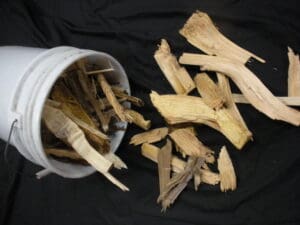
HERE’S A FEW TIPS TO HELP DISTINGUISH THE DIFFERENCE BETWEEN HARD AND SOFT FIREWOOD
The images below show 2 sticks of split firewood. Can you guess which one is soft and which one is hard? My personal approach in distinguishing tree types (hard and soft wood) depends on 3 factors…color, bark and weight.
Take note of the woods’ color and bark differences.
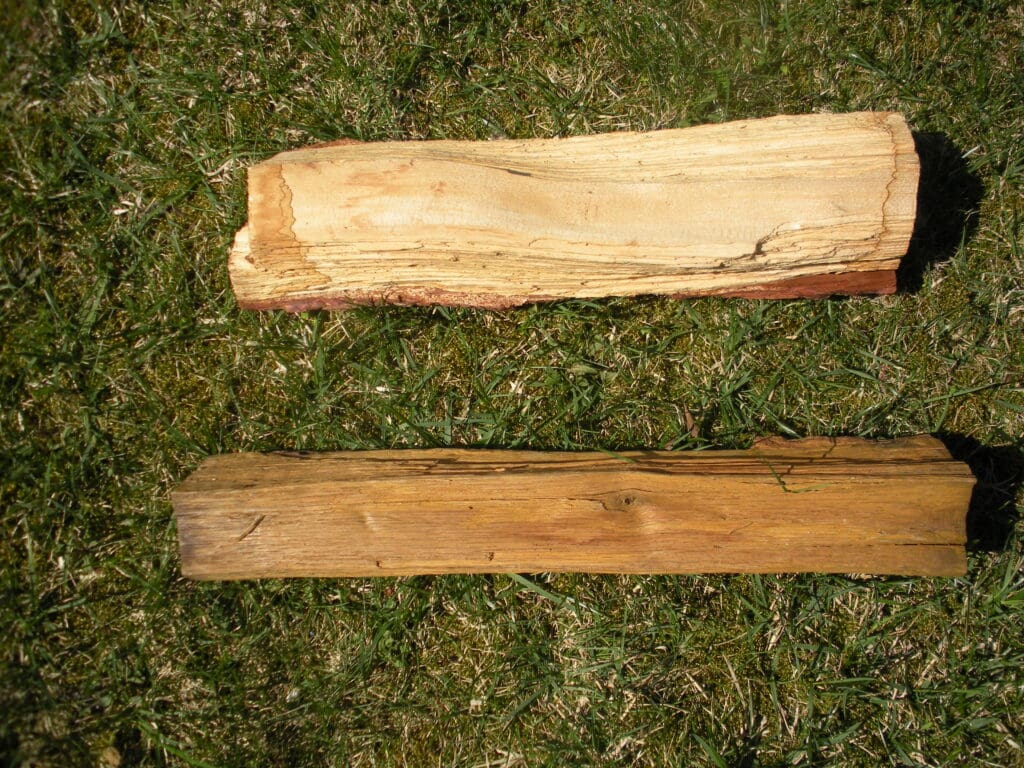
(BTW…Hemlock (top) is the softwood and Red Oak (bottom) is the Hardwood)
Generally speaking, softwood weighs less than its counterpart. Even when it is green (just cut, not dry), it still weighs less than hardwood. So for me, weight is the best means for determining whether the wood is soft or hard. But if you want to be sure of the exact tree species, research the texture and design of the bark.
To be clear, there are numerous ways to identify all tree species such as their leaf characteristics, the general form of the tree, its mode of branching and its bud or fruit.
TIP: Here’s an easy and fun gadget that helps verify and pinpoint a tree species and its fascinating characteristics.
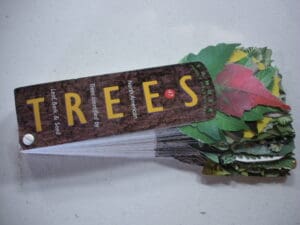
I always carry this portable Tree ID tool with me when I’m on a wood cutting mission. It’s always important to know precisely what tree species (wood) I am dealing with. This Tree ID guide displays accurate and colorful images of trees, their name, leaves, and bark along with other useful facts.
It’s a really cool field guide to have when hiking with the kids too. They love figuring out the various tree species by matching the tree to the correct images. Take it camping or everywhere you travel in the great outdoors!
BEFORE YOUR NEXT OUTDOOR ADVENTURE, GET YOUR OWN TREE IDENTIFICATION GUIDE HERE
CONCLUSION
As you may have already discovered, every single fire has a mind of its own and thus, not any one in particular is ever the same. Whether it’s in your woodstove or outdoors in a firepit, every fire will burn with its own unique character. It’s up to YOU to control that energy – to get the best from it. Whether you desire heat for warmth or cooking, or only to relax amidst the brilliant, intriguing flames… combining softwoods with hardwoods is a great approach for better fires.
Fire Inspires!
BE SAFE,
BZ
Sign up now for my NEWSLETTER! You’ll receive more tips, useful information and exclusive offers for the mailing list only.
Here’s another freebie: Looking for more info on trees? How to care for them? Which ones are best for your property? Download my TREES WE NEED book HERE. It includes the newsletter too!
See what I’m up to on FACEBOOK


